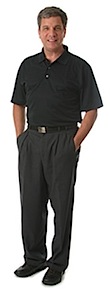by Professor John F. Duffy, George Washington University Law School
You got to know when to hold 'em, know when to fold 'em
Know when to walk away, know when to run
— Kenny Rogers in The Gambler
_____________________________
Kenny Rogers’ hit song The Gambler provides some wise strategic advice, valid not only in cards and but also in law and perhaps in life generally: If “fold ’em” is an option, sometimes it is the best one. Supreme Court Rule 46 on “Dismissing Cases” provides petitioners in Supreme Court cases the opportunity to “fold ’em,” and in the days remaining before the Supreme Court delivers an opinion in its Bilski v. Kappos case, the most puzzling question in the case has become this: Why won’t the petititoners in Bilski fold?
From the perspective of the petitioners, the case for seeking dismissal seems overwhelmingly strong. In the months since the oral argument in Bilski, every Justice save Justice Stevens has delivered an opinion from the set of cases argued in the November sitting. Bilski remains the only case not decided from that sitting. Because only one case remains undecided and only one Justice has yet to deliver an opinion from that month, there is widespread agreement among those familiar with Supreme Court practice that Justice Stevens is writing the Court’s opinion in Bilski. Thus, the petitioners are now reduced to hoping that Justice Stevens, who once argued in dissent that all software should be outside patentable subject matter, will author an opinion that will be more pro-patent than the positions taken by all but one of the Federal Circuit judges.
But there’s more. Not only do petitioners have no realistic hope of winning anything in the case, they also have much to lose by persisting in the appeal. Petitioners—the named inventors in the application, Bernard Bilski and Rand Warsaw—and their firm WeatherWise have other patent claims, some issued and some pending, that pass the machine-or-transformation test but that may not pass whatever test Justice Stevens is busy constructing.
That’s a quick summary of the case for the petitioners seeking dismissal of Bilski. The details only make the case stronger. Then again, there is also a distinct possibility that petitioners’ side of the case may want to lose.
The Petitioners’ Chances for Victory: Nil.
Any rational consideration of persisting in a legal case should begin with a frank assessment of the chances for gain and loss. I’ll begin with the chances for gain, for they are as close to zero as can be imagined.
Good poker players learn to read other players’ “tells,” subtle clues which give hints about the likely outcomes if the hand is played to completion. In Bilski, the Supreme Court has also given some awfully clear “tells” that do not bode well for the petitioners.
Most importantly, the assignment pattern of the Court’s opinions strongly suggests that Justice Stevens is writing the opinion. The assignment of opinions in the Court is typically done with two goals in mind: (1) to give each Justice the chance to author at least one majority opinion from each sitting; and (2) to average out the number of majority opinions written by each Justice. Twelve separate cases were argued in the November sitting, including Bilski. (This counts two cases—Graham v. Florida and Sullivan v. Florida—as effectively one case, as the two cases involved the same issue and were eventually decided the same day.) Every Justice has delivered a majority opinion from that month, with the exception of the Justice Stevens. Thus, most Supreme Court watchers would predict that the one remaining opinion from the month—Bilski—was assigned to Justice Stevens.
There is some uncertainty about this result, however. Pursuant to Supreme Court Rule 46, one of those twelve cases (Pottawattamie County v. McGhee) was dismissed two months after the oral argument, so the Justice assigned to write the opinion in that case is not publicly known. Still, Stevens still remains the most likely candidate to have been assigned the Bilski opinion because of the larger pattern of assignments from the Court’s first three sittings (September, October and November). During those three months, 26 cases were argued. If the Court were trying to average out the workload among the Justices, then every Justice save one should have been assigned three majority opinions to write.
By now, all Justices have delivered three majority opinions from those first sittings with the exception of Justices Stevens and Sotomayor. Justice Stevens has delivered only one majority opinion (a case argued in October); Justice Sotomayor has delivered two majority opinions (one each from October and November). It seems highly likely that Justice Stevens was assigned only two majority opinions to write from the first three sittings because Stevens was also writing the principal dissent in Citizens United v. FEC, the hugely important campaign finance case to which the Court gave expedited consideration. (If, however, Justice Stevens was originally assigned three majority opinions, then he would have definitely been assigned Bilski.) Assuming Justice Stevens was assigned only two majority opinions, then the assignments to write majority opinions in Bilski and the now-dismissed Pottawattamie County case would have been distributed to Stevens and Sotomayor. Sotomayor would seem like the natural for Pottawattamie County, which involved the immunity of state prosecutors from civil liability, because Sotomayor served as a state criminal prosecutor under New York City’s Robert Morgenthau. Stevens, by contrast, was an antitrust lawyer before becoming a judge, and he has shown significant interest in patentable subject matter.
Another clue to the authorship of Bilski comes from the lengthy delay in announcing the opinion. As previously mentioned, Justice Stevens wrote the principal dissent in the Citizens United case, which was heard and decided on an expedited basis by the Court because of the case’s importance to the spring primary season. Stevens’ impassioned dissent in that case ran for 90 pages, and that opinion seems to have delayed the release Stevens’ other majority opinions. Indeed, for two months after the January decision in the Citizens United case, Justice Stevens was the only Justice on the Court not to have delivered any majority opinion during the entire Term.
If, as seems likely, Justice Stevens is writing the majority opinion in Bilski, that is an awful omen for the petitioners. Justice Stevens wrote the majority opinion for the Court in Parker v. Flook (1978), which created the enigmatic rule that certain forms of “post-solution activity” cannot transform an unpatentable principle into a patentable process. Justice Stevens is also one of the few Justices ever to attempt to draw bright-line rules for excluding whole fields from the patent system. His dissent in Diamond v. Diehr, 450 U.S. 175, 193 (1981), sought to promulgate “an unequivocal holding that no program-related invention is a patentable process under § 101 unless it makes a contribution to the art that is not dependent entirely on the utilization of a computer.” 450 U.S. at 219.
In addition to the Court’s fairly clear “tell” that Justice Stevens will deliver the opinion of the Court, there are other signs that the petitioners’ chances for ultimate success are nil. The oral argument did not go well at all for petitioners’ counsel (to put it mildly), and a significant portion of the government’s argument was devoted to arguing that the Court should not impose a more restrictive rule than that sought by the PTO (e.g., a complete ban on business method patents, whether machine implemented or not). See Transcript of Argument at 40-50. In addition, at the Federal Circuit, even Judge Rader—one of the two judges willing to take a more comprehensive view of patentable subject matter—stated explicitly that he would agree the petitioners’ claims were unpatentable as abstract ideas.
Finally, if more evidence were needed, there is the PTO’s extraordinary record of success at the Supreme Court in patent cases. Two recent articles, one by Colleen Chien of Santa Clara University and one of my own, have independently noted that, since the creation of the Federal Circuit, the government’s substantive positions on patent law have always prevailed at the Supreme Court. See Colleen Chien, Patent Amicus Briefs: What the Courts’ Friends Can Teach Us About the Patent System (2010); John F. Duffy, The Federal Circuit in the Shadow of the Solicitor General, 78 G.W.U. L. Rev. 518 (2010). The petitioners in Bilski must hope that the Supreme Court will finally rule against the government, and in an opinion by Justice Stevens, stake out a much more pro-patent position than every judge on the Federal Circuit save one.
The Value of Dismissal.
The impossibly slim odds of winning would not matter to the petitioners if they had nothing to lose from persisting in the appeal. But petitioners Bilski and Warsaw have at least two pending patent applications on business methods for hedging risk. See U.S. Pat. App. 200030233323 A1 (Dec. 18, 2003); U.S. Pat. App. 20040122764 A1 (June 24, 2004). Furthermore, Petitioner Warsaw also is the named inventor on several issued claims in a patent assigned to the firm WeatherWise. See U.S. Pat. No. 6,785,620 (2004). Many of the claims in that patent would seem to pass the machine-or-transformation test, as the claims cover “system[s]” that include various modules for storing and manipulating data. Some claims are also directed to a “computer-readable medium having stored thereon instructions,” which is a form of claim for covering business software that the government currently views as permissible but that could be jeopardized by an unfavorable Supreme Court opinion in Bilski.
If the Bilski case were dismissed, a decision about patentable subject matter would be left for the future. From the standpoint of petitioners, the future would better for two reason. First, Justice Stevens would be replaced by a new Justice, likely Elana Kagan. That change has to favor those on the side of the petitioners since Justice Stevens takes a more restrictive view of patentable subject matter than many of the other Justices on the Court. By contrast, the Solicitor General’s Office under Kagan expressly endorsed the position (stated during the Bilski oral argument) that the Federal Circuit had correctly decided State Street Bank v. Signature Financial. See Transcript of Oral Argument at 44. The future also presents the possibility of a different case, with perhaps more attractive facts.
Dismissal: Still Time?
Supreme Court Rule 46.1 allows any case to be dismissed, even after the oral argument, by agreement of the parties. The Rule directs that, upon filing of such an agreement, the Clerk of the Court, “without further reference to the Court, will enter an order of dismissal.” Furthermore, Rule 46.2 allows petitioners unilaterally to seek dismissal by agreeing to pay all the court costs and fees due. (Such costs and fees are not attorneys’ fees but merely the minor costs associated with the appeal that are paid by the losing party in any case.) The grounds on which respondents may object to such a filing are strictly “limited to the amount of damages and costs in this Court alleged to be payable or to showing that the moving party does not represent all petitioners or appellants.” The Clerk of the Court is directed “not [to] file any objection not so limited.”
The Rule reflects a very clear policy that the Court will not plunge ahead to decide a case if the petitioners have decided to “fold ’em,” and that policy makes perfect sense from the Court’s perspective. The Supreme Court has plenty of cases to decide, and important issues eventually percolate back up to the Court if they really need to be decided. Indeed, in the November sitting alone, the Pottawattamie County case was dismissed even though argument had been heard two months earlier and the case involved an important issue about the scope of prosecutors’ immunity.
True, if the Solicitor General’s Office were unwilling to agree to the dismissal, it is unclear what would happen. At oral argument, however, the advocate for the Solicitor General’s Office emphasized that the government thought the Court should never have taken the case because it was an “unsuitable vehicle” to decide questions of patentable subject matter. Transcript of Argument at 48. Moreover, the Solicitor General’s Office is very much a repeat player at the Supreme Court, and thus the Office tends to be willing to follow not just the letter but also the spirit of the Court’s rules. Since those rules reflect a fairly clear policy that petitioners’ dismissals should not be opposed unless the petitioner either is not willing to pay costs or does not represent all petitioners, the Solicitor General’s Office seems unlikely to attempt to thwart dismissal where the petitioners comply with the conditions of Rule 46.
A Final Point: A Desired Defeat?
All of the above makes the crucial assumption that the petitioners in Biski want to sustain the patentability of business method patents such as their own. But that assumption may be wrong. The patent application at issue is no longer owned by Bernard Bilski, Rand Warsaw or even WeatherWise, the small start-up company that holds similar patent claims on hedging energy consumption risks and is merely a licensee of the patent application at issue in the case (see Paul Schaafsma news article noting the licensing relationship). As the petitioners’ briefs in the Supreme Court disclose, the real party in interest in the case is Equitable Resources Inc., renamed EQT Inc. during the pendency of the case. See Petitioners’ Reply Brief at (i). That corporation has market capitalization of $5.4 billion (see EQT Financial Report). A quick search of the PTO’s database does not show any issued patents owned by this corporation, and the company’s most recent annual report filed with the SEC makes no mention of patents or intellectual property. It is not at all clear that such a company really wants to have patent protection for innovative ways to manage energy costs or risks, or for any other form of business method. Large companies are often the targets of patent infringement litigation, and start-ups often see patents as a means to compete against established firms. Indeed, the Warsaw patent on hedging risk—which is assigned to WeatherWise, not EQT—could itself provide a reason why the petitioners’ side of the case would welcome defeat.
It remains a puzzle why the petitioners in this case are persisting in an appeal that seems not only doomed but also capable of establishing new and unpredictable restrictions to the scope of patentable subject matter. I had previously thought that “irrational exuberance” provided the best answer—that the Bilski petitioners were likely to remain unrealistically optimistic about their chances for success right up to the end. But the presence of a multibillion-dollar corporation controlling the litigation decreases the chances that the strategy is due to simple inventor over-optimism. Perhaps the entity controlling the petitioners’ side of the case is really quite wily, for there would be no cause to “fold ’em,” if the petitioners’ side would view thorough defeat as victory. That would explain much.
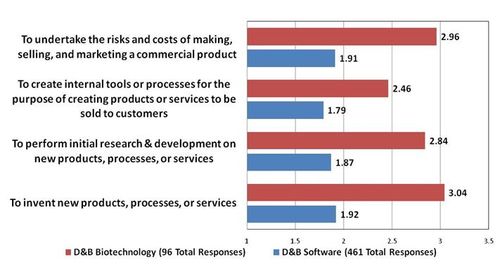
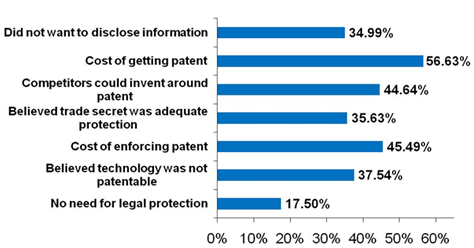
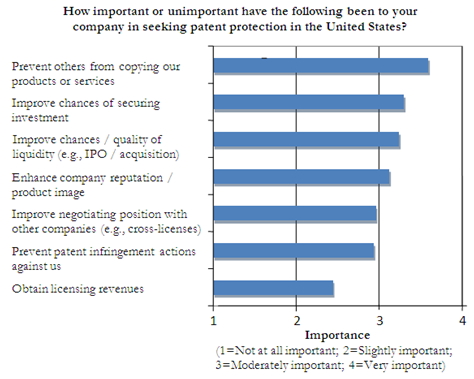
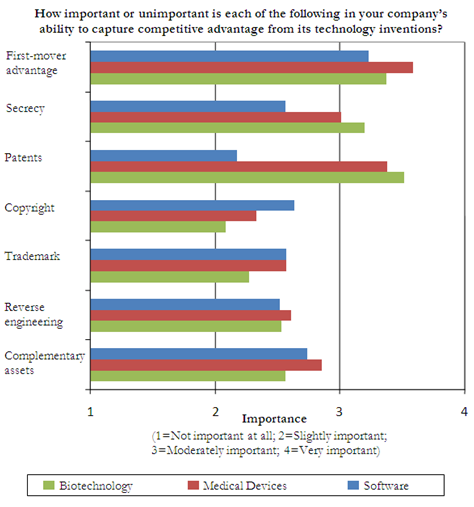
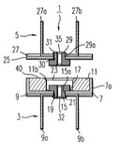

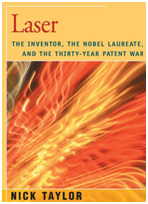 By
By 